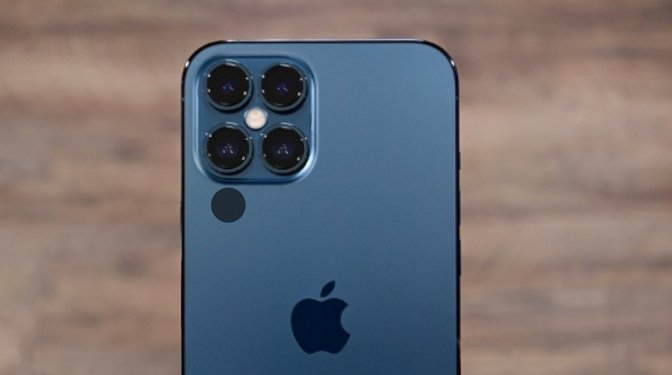Kuo: 48MP camera with 8K support coming to iPhone in 2022, 'mini' model axed
Apple is planning a major camera upgrade for iPhone in 2022, according to analyst Ming-Chi Kuo, with that year's flagship handsets expected to sport a massive 48-megapixel lenser.

In a note to investors on Wednesday, Kuo predicts Apple's top-tier "iPhone 14" models to adopt a 1/1.3" 48MP CMOS image sensor for wide angle camera module duties. The company typically concentrates on wide angle camera technology first, with the benefits trickling down to telephoto and ultra-wide angle systems in subsequent years.
Interestingly, the sensor could support hybrid operating modes to maximize pixel size and capitalize on the hardware's light-gathering capabilities.
"We believe that the new 2H22 iPhone may support direct 48MP output and 12MP (four cells merge output mode) output simultaneously," Kuo says. "With 12MP output, the CIS pixel size of the new 2H22 iPhone increases to about 2.5um, which is significantly larger than the iPhone 12 and iPhone 13, and larger than existing Android phones, and close to the DSC level."
Pixel size at native 48MP resolutions comes in at about 1.25um, Kuo says. For reference, iPhone 12's pixels clock in at 1.7um, while Kuo predicts this year's "iPhone 13" to sport a sensor with 2um pixels.
The high resolution sensor is expected to support 8K video recording, a substantial bump over iPhone's current 4K limit. Though frame rates were not mentioned in today's report, Kuo believes the addition will benefit recordings for augmented reality devices, a sector Apple is widely rumored to enter in the near future.
Existing supplier Sony will produce the forthcoming sensor, with LG working on the compact camera module (CCM), Kuo says.
Apple is anticipated to pay more per camera module with the move to 48MP. In addition to tilt control, calibration of the CCM will be more complicated than current iPhone models due to the sensor's increased surface area. The iPhone 12 Pro was the first to implement sensor-shift stabilization on the wide angle module.
Finally, Kuo suggests Apple will discontinue the iPhone mini line in 2022, offering only 6.1- and 6.7-inch variants of the base model and "Pro" series.

In a note to investors on Wednesday, Kuo predicts Apple's top-tier "iPhone 14" models to adopt a 1/1.3" 48MP CMOS image sensor for wide angle camera module duties. The company typically concentrates on wide angle camera technology first, with the benefits trickling down to telephoto and ultra-wide angle systems in subsequent years.
Interestingly, the sensor could support hybrid operating modes to maximize pixel size and capitalize on the hardware's light-gathering capabilities.
"We believe that the new 2H22 iPhone may support direct 48MP output and 12MP (four cells merge output mode) output simultaneously," Kuo says. "With 12MP output, the CIS pixel size of the new 2H22 iPhone increases to about 2.5um, which is significantly larger than the iPhone 12 and iPhone 13, and larger than existing Android phones, and close to the DSC level."
Pixel size at native 48MP resolutions comes in at about 1.25um, Kuo says. For reference, iPhone 12's pixels clock in at 1.7um, while Kuo predicts this year's "iPhone 13" to sport a sensor with 2um pixels.
The high resolution sensor is expected to support 8K video recording, a substantial bump over iPhone's current 4K limit. Though frame rates were not mentioned in today's report, Kuo believes the addition will benefit recordings for augmented reality devices, a sector Apple is widely rumored to enter in the near future.
Existing supplier Sony will produce the forthcoming sensor, with LG working on the compact camera module (CCM), Kuo says.
Apple is anticipated to pay more per camera module with the move to 48MP. In addition to tilt control, calibration of the CCM will be more complicated than current iPhone models due to the sensor's increased surface area. The iPhone 12 Pro was the first to implement sensor-shift stabilization on the wide angle module.
Finally, Kuo suggests Apple will discontinue the iPhone mini line in 2022, offering only 6.1- and 6.7-inch variants of the base model and "Pro" series.

Comments
iPhones have improved a lot in recent years but smartphone cameras moved away from focusing (no pun intended) solely on image quality few years ago and brought the notion of 'versatility' to the table so I think you are correct and most people would have to agree with you.
Now, those added features that provided versatility are being honed on competing phones and rumours like this one seem to confirm Apple's plan to give users these features very, very slowly.
If it weren't for the component shortage and and politics, the P50 series would already be here and that is widely recognised the industry benchmark series for new advances in smartphone camera technology, and will probably widen the divide when it arrives.
The HomePod was probably cancelled as it didn’t hit some return on investment metric. AppleTV+ on the other hand is being given a free pass as it’s Cook’s attempt at a legacy. They’ve spent billions on AppleTV+, likely much more than the HP, but barely anyone talks about it. When the HP was cancelled, the thread had more comments by non-regulars than I’ve seen in years. The threads on AppleTV+ get a couple of comments, if that.
Unless you can find a way to bypass the laws of physics or take pictures where you're not pointing at light source.
On DSLR's the lense hood can eliminate them.
As is often the case with postings like this, perception trumps reality.
A simple Google search yields some interesting facts.
We can see that Apple's margins started their upwards trajectory under Jobs until they hit their peak in 2012 (peak iPhone?). They have since levelled off under Tim Cook. So what conclusions can we draw? SJ was a greedy S.O.B. and TC is level headed manager?
Source: https://www.macrotrends.net/stocks/charts/AAPL/apple/profit-margins